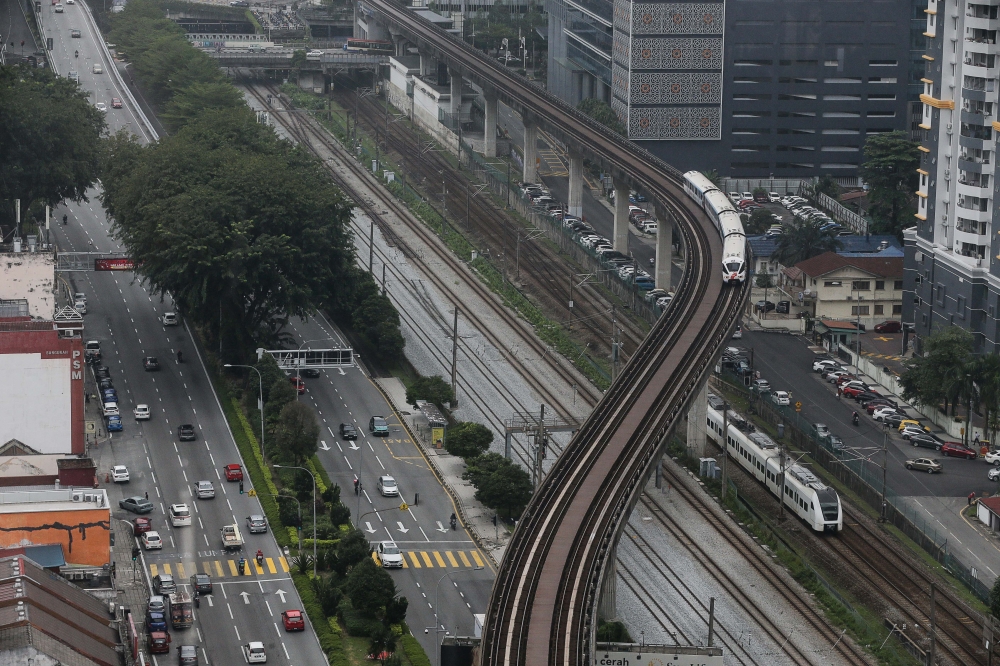NOVEMBER 27 — Highways, roads, sidewalks, rail and bus services all play a vital role in connecting people to family, friends, jobs, education and recreational activities.
The first World Sustainable Transport Day, celebrated on 26 November 2024, serves as a reminder of the crucial role of safe, affordable, accessible and sustainable transport systems.
For rapidly growing cities, how can urban infrastructures effectively facilitate the movement of its residents?
A Khazanah Research Institute (KRI) article explores the challenges of urban mobility in Malaysia. It argues that the prevailing urban transportation system has encouraged and entrenched a high degree of automobile dependency within Malaysian cities.
High private vehicle ownership, low public transport usage
Past investments in our transportation systems have primarily focused on accommodating the movements of motor vehicles. This auto-oriented development and the resulting associated land use patterns in Malaysian cities have resulted in continued investments into building additional roads, particularly toll expressways, to ease congestion at the expense of designing effective multi-modal transportation systems that make it easy for city dwellers to walk, cycle or use public transit.
This has ultimately led to an over dependence on motorised vehicles as the primary source of mobility in urban areas. In the case of Malaysia, these vehicles are mostly privately owned cars and motorcycles, further reducing the role of public transit in the urban transportation system.
It is of no surprise then to note that Malaysia has one of the highest rates of car ownership in the world.
In 2023, a total of 1.53 million new vehicles were registered with the Road Transport Department (JPJ) in the entire country. An overwhelming majority of these, totalling 1.47 million units, were private cars and motorcycles.
Despite additional investments into the public transport system (especially in the Greater KL conurbation), the preference for public transport has remained low among users.
Ridership figures of the newly introduced Mass Rapid Transit (MRT) system, which is below target, suggest that the additional development of big transit infrastructures without an accompanying multi modal transit ecosystem (for example, adequate feeder bus services and accessible micromobility solutions) that is supportive may relegate these investments to be ineffective at increasing public transport usage.

Building cities for people, not cars
More importantly, the physical built form of Malaysian cities does not take public transport into consideration. While the development of a transit-oriented transportation network provides the necessary infrastructure for the provision of public transport services, just as important is the need to develop and design a pedestrian friendly built environment for urban areas that will make these transit nodes conducive for public use.
When your built environment makes it easier for you to drive a car to get to other places, you will naturally be more inclined to do so. Similarly, minor interventions within the current built environment of Malaysian cities can make a big difference in making public transport a viable transit option for city dwellers.
For example, wider pedestrian pathways and additional pedestrian crossings across busy roads can improve first and/or last mile connectivity and make it easier and safer for people to walk and switch between transportation nodes.
Currently, urban transport planning within Malaysian cities assumes a ‘traffic focus’, where success is defined in terms of facilitating vehicle movement, positioning overall policy planning to be at odds with a more sustainable mobility-focused or access-focused goal for urban transport systems.
It is vital for our country to pursue a more efficient way to address the mobility demands of its ever-growing urban residents. Urban transport planning in Malaysian cities must address the incompatible dynamics of public transit usage within the existing auto-oriented development of most Malaysian cities.
* The author is a research associate at Khazanah Research Institute (KRI).
** This is the personal opinion of the writer or publication and does not necessarily represent the views of Malay Mail.





















